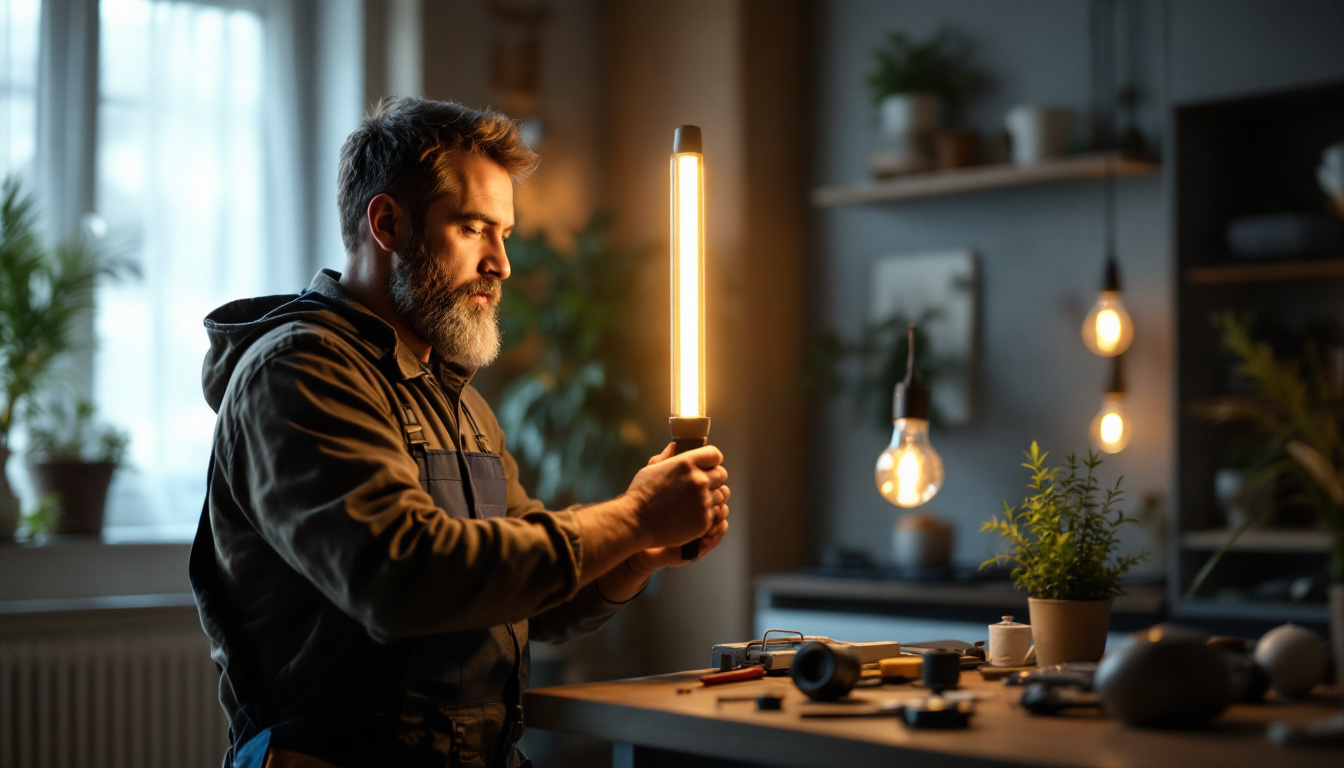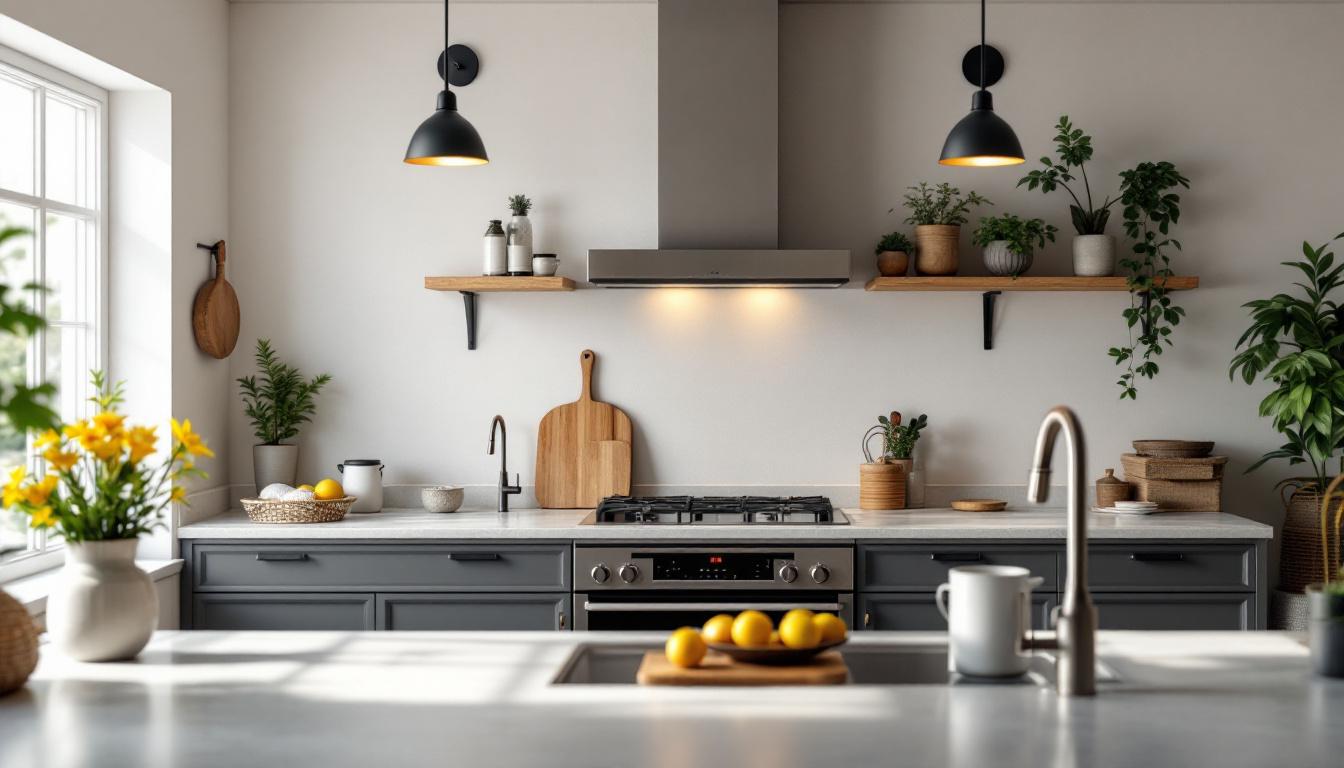
In the fast-paced world of lighting installation and maintenance, having a comprehensive checklist can significantly enhance efficiency and ensure quality. This article provides a detailed checklist tailored for lighting contractors, focusing on essential aspects that contribute to successful projects. From initial planning to final inspection, each step is crucial for delivering exceptional results.
Before embarking on any lighting project, thorough planning is essential. This phase sets the foundation for a successful installation and helps mitigate potential issues down the line.
Conducting a detailed site assessment is the first step in the planning process. This involves evaluating the space where the lighting will be installed, considering factors such as existing electrical systems, ambient light conditions, and architectural features. Understanding these elements will help in selecting the right lighting solutions.
Additionally, take note of any potential obstacles that could affect installation, such as structural elements or furniture placement. Documenting these details will aid in creating a more accurate project plan. It’s also beneficial to consider the intended use of the space; for example, a cozy reading nook will require different lighting than a bustling kitchen. By assessing the functionality of each area, you can tailor your lighting choices to enhance both aesthetics and usability.
Engaging with clients to understand their vision and requirements is vital. Discuss their preferences regarding lighting styles, brightness levels, and energy efficiency. This conversation not only builds rapport but also ensures that the final outcome aligns with their expectations.
During this consultation, it’s also important to address any budget constraints and timelines. Establishing clear communication from the outset will help avoid misunderstandings later in the project. Furthermore, consider providing clients with a portfolio of previous projects or mood boards to inspire their choices and clarify their preferences. This visual aid can be instrumental in aligning your vision with theirs and can spark ideas that they may not have initially considered.
Once the site assessment and client consultation are complete, the next step is to create a design plan. This plan should include detailed layouts, lighting types, and placement strategies. Utilizing design software can enhance visualization and allow for adjustments before actual installation.
Consider incorporating energy-efficient lighting options, such as LED fixtures, which not only reduce energy consumption but also offer long-term cost savings for clients. Presenting these options can demonstrate professionalism and a commitment to sustainability. Additionally, think about the integration of smart lighting technology, which allows for customizable settings and can be controlled remotely. This not only adds convenience but also appeals to tech-savvy clients looking for modern solutions that enhance their living spaces. By showcasing these innovative features, you can elevate the overall design and functionality of the project, ensuring it meets the evolving needs of the client.
Having the right materials and equipment on hand is crucial for a smooth installation process. This section of the checklist focuses on ensuring everything needed is prepared ahead of time.
Before heading to the job site, conduct a thorough inventory check of all necessary materials. This includes light fixtures, bulbs, wiring, switches, and any additional components required for installation. Ensuring that all items are accounted for will minimize delays and prevent unnecessary trips to suppliers.
It’s also wise to have a few extra items on hand, such as bulbs and connectors, to address any unforeseen issues that may arise during installation.
Gathering the right tools is just as important as having the right materials. Essential tools for lighting installation include drills, screwdrivers, wire strippers, and voltage testers. Make sure all tools are in good working condition and easily accessible.
Consider investing in specialized equipment, such as lift systems for high installations or laser levels for precise alignment. These tools can enhance efficiency and accuracy, ultimately leading to a more professional finish.
Safety should always be a top priority on any job site. Ensure that all team members are equipped with appropriate safety gear, including hard hats, gloves, safety glasses, and non-slip footwear. Familiarize the team with safety protocols and emergency procedures to create a safe working environment.
Additionally, consider conducting a safety briefing before starting the project. This reinforces the importance of safety and ensures everyone is aware of their responsibilities.
The installation phase is where the planning and preparation come to fruition. Adhering to a systematic approach during this stage can lead to a successful project outcome.
Begin by ensuring that all electrical connections are made safely and in accordance with local codes. This includes properly connecting wires, securing junction boxes, and ensuring that all connections are insulated and protected from moisture.
It’s advisable to double-check the power supply before proceeding with the installation. This step helps prevent electrical hazards and ensures that the system will function correctly once powered on.
When installing light fixtures, follow the design plan closely. Ensure that each fixture is mounted securely and positioned according to the specified layout. Take care to align fixtures properly for aesthetic appeal and optimal lighting performance.
As fixtures are installed, it’s beneficial to periodically step back and assess the overall look and functionality. This allows for adjustments to be made before the installation is finalized.
Once all fixtures are installed, the next step is to test the lighting system. Turn on the power and check each fixture for functionality. This is the time to identify any issues, such as flickering lights or dead bulbs, and address them promptly.
Adjust the positioning and brightness of fixtures as necessary to achieve the desired lighting effect. This final tweaking can significantly enhance the overall ambiance of the space.
After the installation is complete, there are several important steps to ensure client satisfaction and project success.
Conduct a thorough final inspection of the installation. Check for any visible wiring, ensure all fixtures are secure, and confirm that the lighting meets the client’s specifications. This is also an opportunity to clean up the work area, removing any debris or packaging materials.
Engaging the client during this inspection can provide valuable feedback and demonstrate professionalism. Address any concerns they may have and make necessary adjustments before concluding the project.
Once the installation is complete, take the time to educate the client on how to operate and maintain their new lighting system. Provide information on bulb replacement, dimmer settings, and any smart features that may be included.
Offering guidance on energy-saving practices can also enhance client satisfaction and reinforce the value of the installation. Providing a printed or digital manual can serve as a helpful reference for the client.
Establishing a follow-up protocol can help maintain a positive relationship with clients. Schedule a follow-up visit or call to ensure they are satisfied with the installation and to address any questions or concerns that may arise after the project is completed.
This follow-up not only demonstrates commitment to customer service but can also lead to potential referrals and repeat business in the future.
Maintaining accurate records is essential for any lighting contractor. Documentation serves various purposes, from project management to warranty claims.
Keep detailed records of each project, including contracts, design plans, and client communications. This documentation can be invaluable for future reference, especially if issues arise or if the client wishes to expand their lighting system later on.
Consider using project management software to streamline this process. Digital records are easier to organize and can be accessed from anywhere, enhancing efficiency.
Documenting warranty information for all fixtures and components is crucial. This includes the manufacturer’s warranty details and any maintenance agreements established with the client. Having this information readily available can simplify future service requests and repairs.
Encourage clients to keep their own records as well, providing them with a checklist of maintenance tasks to ensure longevity and performance of their lighting system.
The lighting industry is constantly evolving, with new technologies and techniques emerging regularly. Staying informed and adaptable is key to success as a lighting contractor.
Investing in ongoing training and development for yourself and your team can enhance skills and knowledge. Attend workshops, webinars, and industry conferences to stay up-to-date with the latest trends and innovations in lighting technology.
Encourage team members to pursue certifications or specialized training in areas such as energy efficiency or smart lighting systems. This not only improves service quality but also positions the company as a leader in the industry.
Soliciting feedback from clients and team members can provide valuable insights into areas for improvement. Use surveys or informal conversations to gather opinions on the installation process, customer service, and overall satisfaction.
Be open to making adjustments based on this feedback. Continuous improvement fosters a culture of excellence and can lead to enhanced client relationships and business growth.
A well-structured checklist is an invaluable tool for lighting contractors. By following the outlined steps, from pre-project planning to post-installation procedures, contractors can ensure a seamless process that meets client expectations and delivers high-quality results.
Investing time in preparation, maintaining safety standards, and committing to continuous improvement will not only enhance project outcomes but also solidify a contractor’s reputation in the industry. Embracing these practices will lead to successful lighting installations and satisfied clients.
Ready to elevate your lighting projects with the highest quality products at the best value? Look no further than LumenWholesale. Our spec-grade lighting solutions are designed to meet the rigorous demands of any installation, ensuring reliability and performance when it matters most. With unbeatable wholesale prices and the convenience of free shipping on bulk orders, LumenWholesale is your go-to source for all your lighting needs. Say goodbye to inflated markups and hidden fees, and hello to the perfect blend of quality, affordability, and convenience. Wholesale Lighting at the Best Value is just a click away. Make the smart choice for your business and your clients with LumenWholesale.

Discover expert tips from a seasoned lighting contractor on how to select and install outdoor solar lights without common pitfalls.

Discover the essential facts about long lamp bulbs that every lighting contractor needs to know.

Discover why lighting contractors should prioritize string grow lights in their projects.

Discover the secrets of successful lighting projects with Arthur’s Island Kitchen.